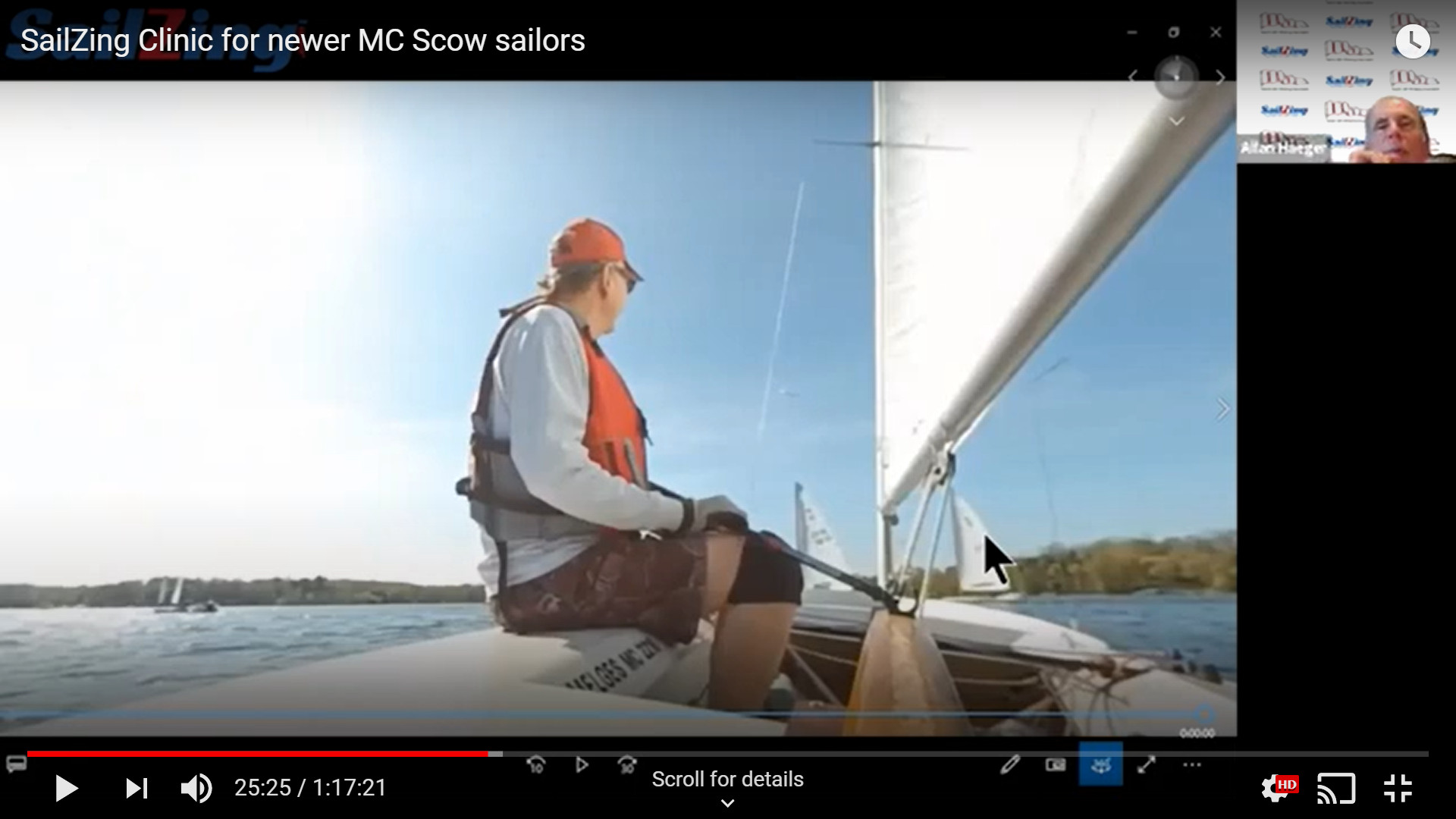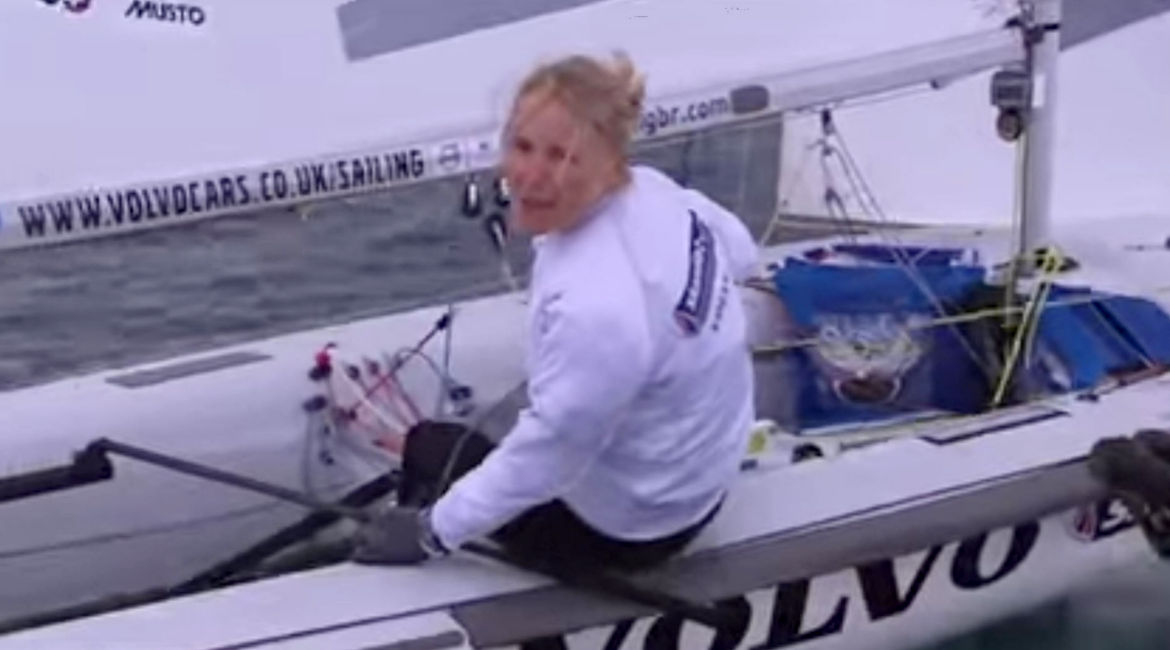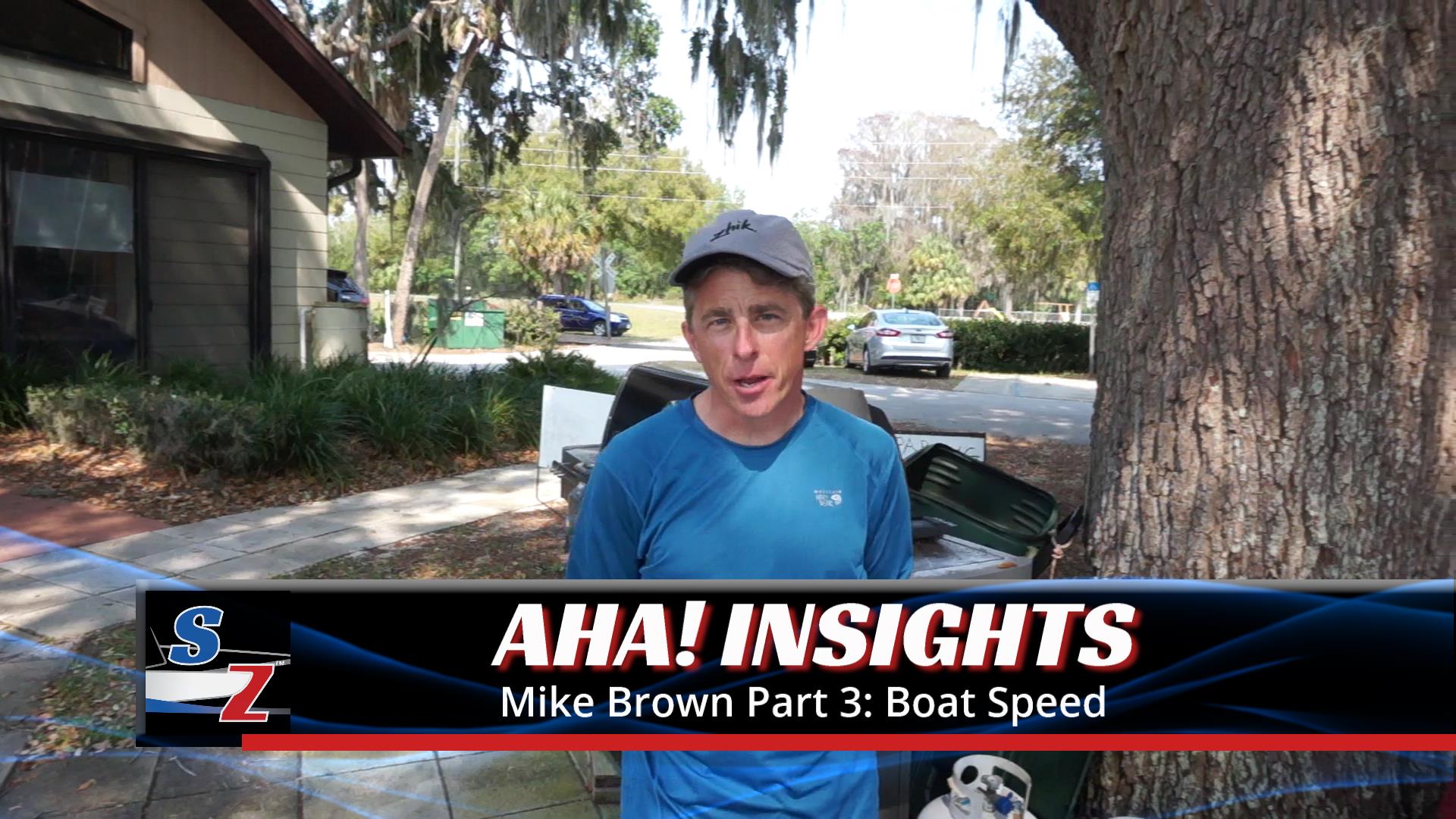Are you a newer racing sailor? If so, sailing fast upwind may be one of the toughest things to learn. This post captures a virtual clinic with several newer sailors at the Lake Beulah Yacht Club.
We focused the clinic around live video of one newer sailor. After watching the sailor’s upwind technique, we offered suggestions. We organized the discussion around eight key concepts for sailing fast upwind. These concepts were passed down from influential sailors that helped your editor become a faster sailor.
These concepts are not always easy to understand or put in practice. The text below summarizes them in outline form, but the video illuminates them more clearly through the discussion and questions.
Watch the video here or read the summary below.
Sailing Fast Upwind – Eight Time-Tested Phrases
Put pressure on the boat
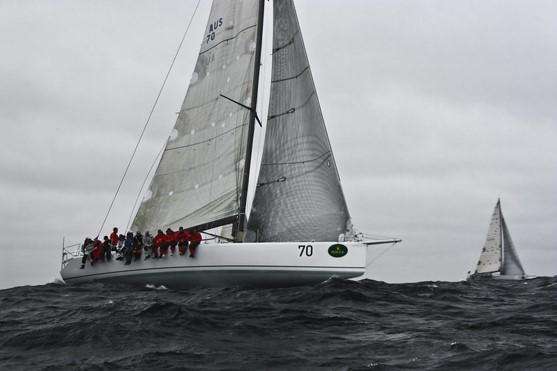
- Why
- Most of the sail’s force is heeling force.
- Forward force is limited by how much heeling force you can balance (pressure on the boat).
- Things to work on
- Trim hard
- Use controls, not luffing, to depower. Make sure you’re not steering higher to take pressure off.
- You may have to luff the sails when your controls are on fully and you can’t hold the boat down.
- Hike!
- Legs extended
- Shoulders outside butt
- Butt outside rail
- Get a crew in heavy air
- Trim hard
Trim to the leech, steer to the luff
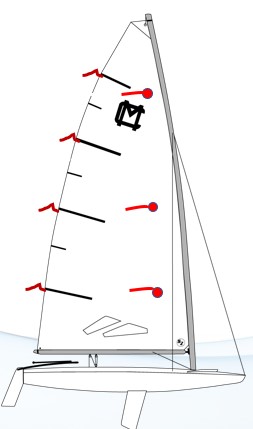
- Why
- You need to put curvature in the sail for power. Trimming the mainsheet tightens the leech and adds curvature.
- Luff behavior indicates angle of attack – so steer to maintain the correct angle
- Things to work on
- Trim main in until:
- Top batten parallel to boom
- Leech tales active
- Leech not “frozen”
- Steer up or down until:
- Luff is firm, no backwinding; mast is loaded
- Leeward luff tales streaming
- Windward luff tales streaming or periodically lifting
- Sidestay tales pointing toward aft end of sail
- Adjust constantly
- Trim main in until:
Feather and ease, hike, and trim (in a puff)

- Why
- Keep boat on its lines (ease)
- Quickly match angle of attack to the change in apparent wind to accelerate (ease)
- Gain ground to windward (feather slightly)
- Re-power when puff is spent (trim)
- Things to work on
- Ease main as rapidly as needed and hike to maintain angle of heel
- Feather: steer up slightly (3-5 degrees)
- Trim back rapidly as soon as you can re-power
- Feel the acceleration!
- In a lull, do the opposite
- Feather down/trim in, weight in, and then ease
Work the controls
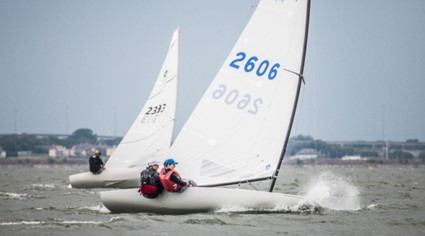
- Why
- The sail is a like continuously variable transmission
- Controls are designed to be loaded hard
- Things to work on
- As the breeze builds
- Trim main harder
- Approach block to block in heavy air
- Tighten vang as you trim main
- Fully slack to as hard as you can pull
- Ease when wind lightens or before bearing off!
- Tighten cunningham as you add vang
- Drop traveler
- Use after a healthy dose of vang and cunningham
- May need to go all the way down
- Trim main even harder (see “flat is fast”)
- Reverse order as breeze lightens
- As the breeze builds
Angle of heel is everything

- Why
- Makes boards effective
- Reduces wetted surface
- Reduces helm
- Makes boat “longer.” (Longer boats are faster.)
- Just as important downwind as upwind
- Things to work on
- Keep water below the rail (in a scow)
- Learn to move your weight smoothly between positions
- Full hike
- Sit/stand in center of boat
- Sit to leeward
- Sit under boom
- Hike to leeward
Flat (sail) is fast
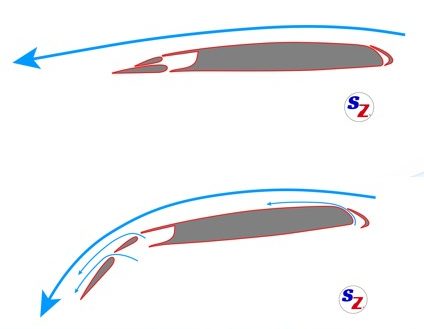
- Why
- Less drag, better pointing
- In very light air, airflow can stay attached
- Things to work on
- Shifting gears
- Once up to speed, tighten mainsheet to bend mast and flatten sail
- Ease main when you need to re-accelerate
- Overpowered
- Resist temptation to let sail luff
- Drop traveler and sheet even harder
- Very light air
- A flatter sail may be faster than a full sail
- Shifting gears
Dirty air makes you crazy
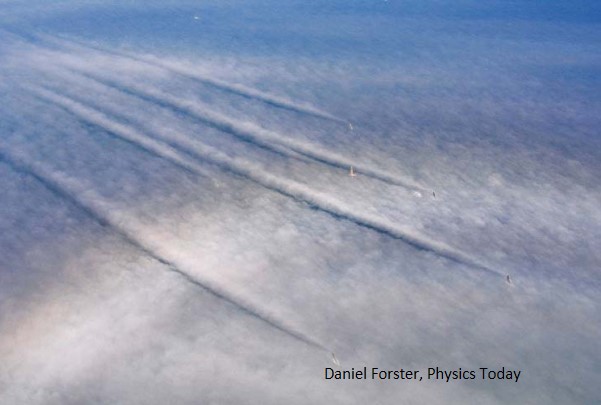
- Why
- It’s everywhere, but invisible
- Can’t achieve speed, even with good technique
- Makes you second-guess yourself
- Things to work on
- Don’t hang back on the starting line
- Find a lane after a bad start
- Don’t tack into a bad lane
- Defend your air downwind
Get comfortable in the boat
- Why
- Minimize distractions to reduce mental overload
- Reduce physical overload
- Things to work on
- Does everything in the boat work properly?
- Mainsheet
- Proper grip
- Thickness and texture
- 5:1 purchase
- Grippy gloves
- Tangle prevention or interference
- Tiller grip and control
- Footwork routines
- Comfortable hiking
- Pads, core strength, position, straps
- Don’t over-hike
- Distractions
- Items rolling around
- Tangled telltales
- Water in boat
Sailing Fast Upwind – A Journey
Try to master these concepts. Practice with other boats and go to regattas to accelerate your progress.
As you progress, you’ll find nuances and exceptions. When you’re ready to go deeper, here are some related SailZing.com posts:
Puff Response: Variations on Ease, Hike, Trim
Heavy Air Boat Speed: Sheet Harder and Drop Traveler
Don’t Be Lazy with Mainsheet Tension
Hike Harder and Smarter
MC-Scow Sailing Speed Guide Plus Drills

